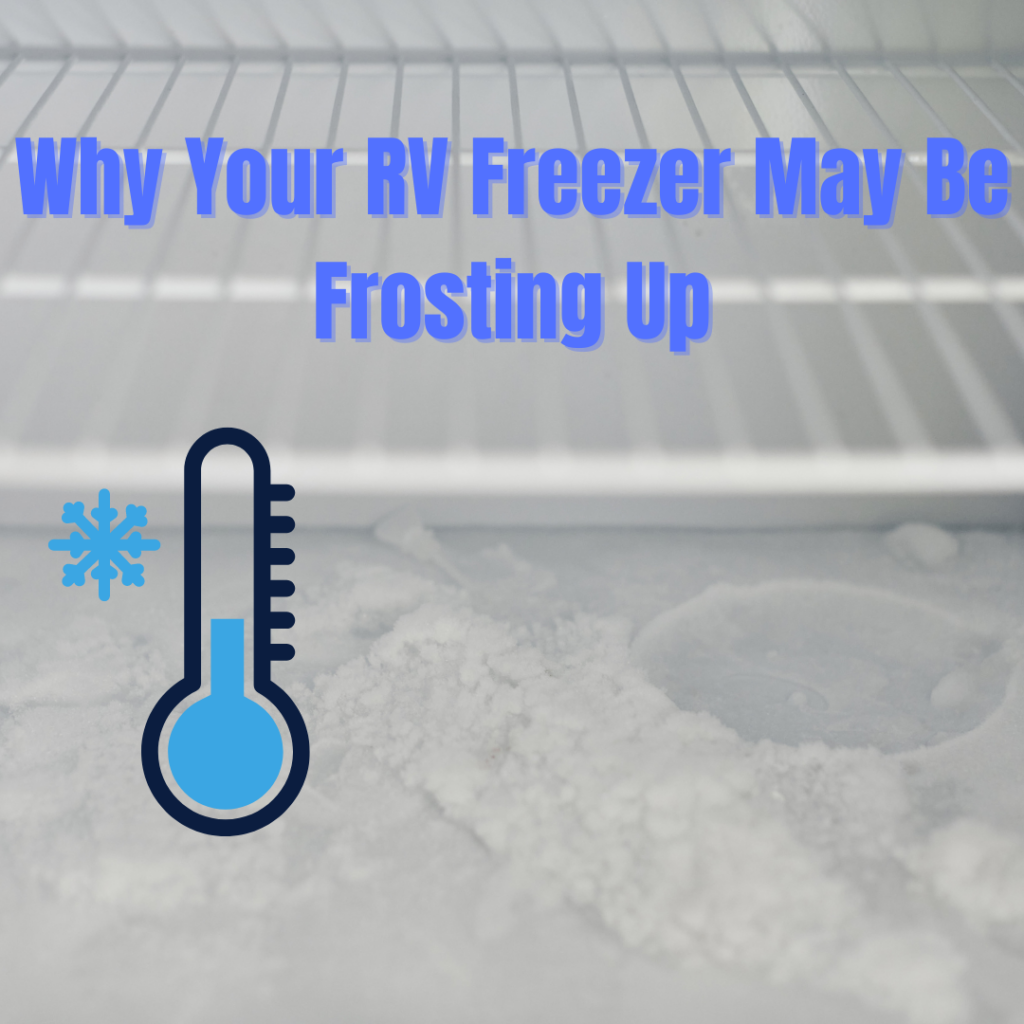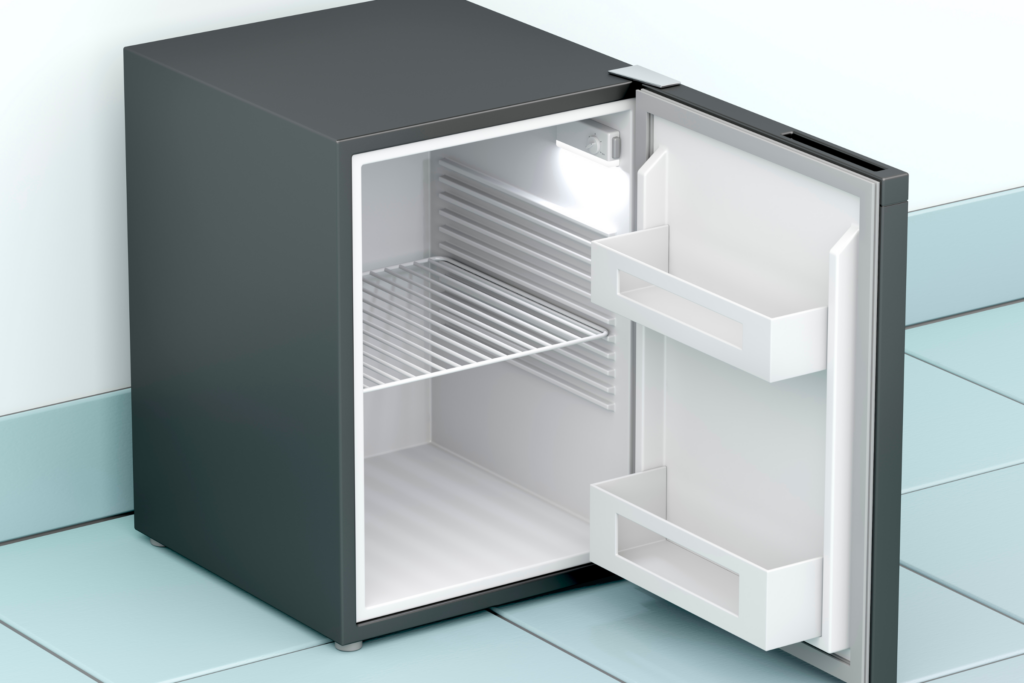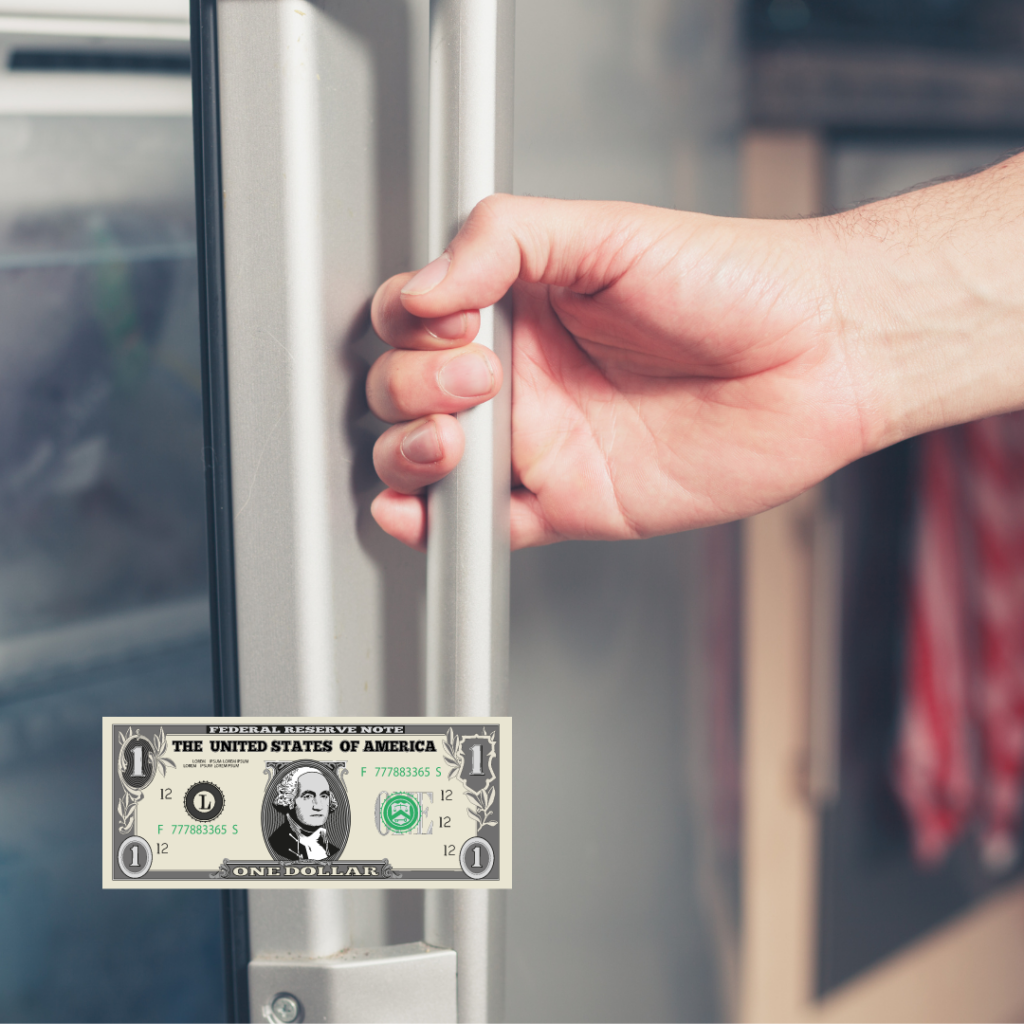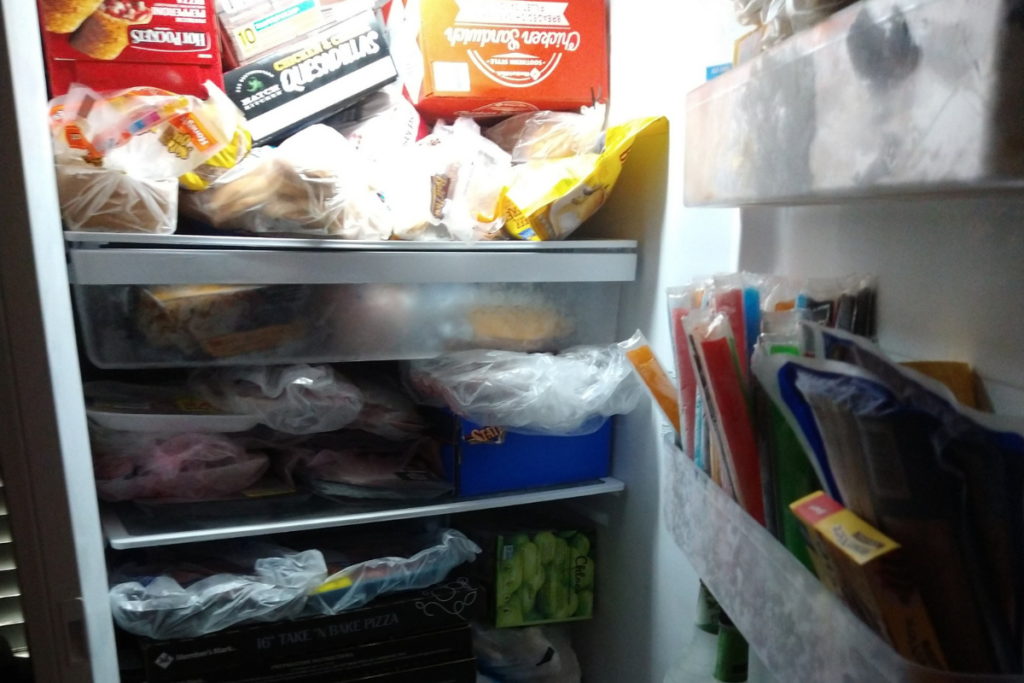RV Freezer Frosting Up? (4 Main Causes + 8 Helpful Defrosting Tips!)
Do you have an unusual or unexplained buildup of ice in your RV’s freezer? While it is normal for freezers without the defrost feature to form ice over time, if the buildup is faster than usual, you need to find out why and fix it. In this article, we’ll cover a few reasons why your RV freezer may be frosting up and give you some tips to fix this frosty issue!
Your RV freezer may be frosting up because of warm, humid air which comes into contact with the inside of the freezer. When humid air enters your RV, some of this humidity will seep into the freezer. Once this air enters the freezer, it cools, and the moisture changes states from a gas to a solid, forming ice on the interior walls of your freezer.
Read on to learn more about RV freezer troubles and get a few tips and tricks for defrosting these important RV appliances.

Is it normal for an RV freezer to frost up?
Hey, have you ever noticed that your freezer is getting frosty?
It’s like a winter wonderland in there, especially when it’s humid outside and your freezer doesn’t have an auto-defrost feature. That’s because the moisture in the air condenses and forms ice in your RV freezer, which can build up over time and mess with your food’s chill vibes.
If you’re seeing about 1/4 inch of ice on the back wall of your freezer, it’s time to defrost that baby. Otherwise, the ice will limit how much heat can be extracted from the inside of the freezer, and your food will be sweating like a sinner in church.
But fear not, my friend! If you’ve got a freezer with an auto-defrost feature, it’s like having a personal defrosting assistant. The interior gets heated up from time to time, which stops the ice buildup in its tracks. So sit back, relax, and let your freezer do the work for you!
If you don’t have an auto-defrost in your RV freezer, however, then you might be struggling with this ice.
Let’s look at the most common reasons for frost buildup in an RV freezer.
Why your RV freezer is frosting up – 4 Main Reasons
If the freezer does not have an auto-defrost feature, then you can expect it to build up ice over time.
Depending on how much humidity there is in the air and how much of it enters the freezer, the ice buildup may be quicker or slower.
If the freezer is running constantly, then you can expect ice buildup in about 3-4 weeks. This is a rough guide, as there are several variables at play.
Check the following potential causes of RV freezer frosting before attempting to defrost manually.

1. Check the freezer thermostat setting
Is it set to the lowest level? Does it need to be set to the lowest setting to preserve the food in the freezer?
You can use a standalone digital thermometer or a wireless digital thermometer to check that the freezer can maintain the desired temperature at that thermostat setting.
You may be able to limit the frosting by raising the temperature slightly yet keeping the food fresh and safe.
2. Confirm that the RV freezer door seals are intact and the door closes firmly
If the seals are not completely keeping out the surrounding moist air, then you’re likely to have faster icing up of the freezer.
You can carry out the dollar bill test to check if the freezer door is closing firmly.

3. Attempt the dollar bill test
Insert a dollar bill between the section of freezer door seals that you are inspecting and close the door.
Next, try to pull out the dollar bill.
If it slides out with some resistance, then the door seals well.
Repeat this test for the remainder of the freezer door seals.
Look out for seals that may be out of position or damaged.
Fix: Align the seals, and replace the damaged seals. If the door is not closing properly, contact the freezer supplier if the freezer is still under warranty.
Monitor to see if there is an improvement in the operation of the RV freezer once the seals are fixed, or the door is repaired.

4. Check if the freezer door has been left open for long periods of time
Opening the freezer door for long durations accelerates the buildup of frost.
Confirm if this might be an issue if there’s frost buildup faster than usual. Minimize the freezer door opening and monitor to see if this slows down the buildup of ice.

How to defrost an RV freezer manually (8 steps)
Here is a step-by-step guide for manually defrosting an RV freezer:
Turn off the RV’s power supply
Before defrosting the freezer, make sure to turn off the power supply to the RV to avoid any electrical hazards.
Remove all items from the freezer
Take out all the items from the freezer and store them in a cooler or another freezer to keep them frozen.
Place towels or a container under the freezer compartment
Place towels or a container under the freezer compartment to catch any water that may drip during the defrosting process.
Open the freezer door
Leave the freezer door open to allow it to thaw naturally.
Use a hairdryer or hot water to speed up the process
If you need to speed up the defrosting process, you can use a hairdryer or pour hot water over the ice buildup. Be careful not to damage the freezer or any electrical components.
Remove the ice buildup
Once the ice has melted, use a towel or sponge to remove any remaining water or ice buildup.
Clean the freezer
Use a mild detergent and warm water to clean the inside of the freezer. Make sure to rinse thoroughly and dry completely before turning the power supply back on.
Turn the power supply back on
Once the freezer is clean and dry, turn the power supply back on and wait for the freezer to reach its desired temperature before putting the items back in.
Remember always to follow the manufacturer’s instructions for defrosting your RV freezer and wear appropriate protective gear, such as gloves, when handling frozen items.
You can use the thermometer to check if the freezer has attained the desired temperature and then place the food back.
How to prevent an RV Freezer from frosting up
Why did the RVer refuse to share his freezer with his friend?
Because he didn’t want to give him the cold shoulder!
But in all seriousness, RV freezer frosting can be a real headache for travelers. Luckily, there are some simple steps you can take to prevent it from happening.
Here are some actionable tips to keep your freezer frost-free and your ice cream scoopable.
- Keep the RV at a consistent temperature: Fluctuations in temperature can cause condensation in the freezer, leading to frost buildup. Make sure to keep the RV at a consistent temperature to prevent this from happening.
- Use a dehumidifier: A dehumidifier can help remove excess moisture from the air, preventing it from entering the freezer and causing frost buildup.
- Check the door seals: Make sure the door seals are tight and free of any cracks or gaps. This will prevent warm, humid air from entering the freezer and causing frost buildup.
- Avoid opening the freezer frequently: Every time you open the freezer, warm air enters and causes condensation, which can lead to frost buildup. Try to limit the number of times you open the freezer and keep the door closed as much as possible.
- Don’t overload the freezer: Overloading the freezer can restrict airflow and cause uneven cooling, which can lead to frost buildup. Make sure to leave enough space around items in the freezer to allow for proper airflow.
- Use a fan: Using a small fan inside the RV can help circulate air and prevent moisture buildup.
- Keep the RV well-ventilated: Proper ventilation can help reduce humidity levels inside the RV, preventing moisture from entering the freezer and causing frost buildup.
- Clean the freezer regularly: Regularly cleaning the freezer can help prevent frost buildup by removing any moisture or debris that may be present.
Final thoughts on RV freezer troubleshooting and frosting over
You can expect your RV’s freezer to ice up over time if it does not have an auto-defrosting feature.
If it starts icing up sooner than expected, you may have to adjust the freezer temperature.
Make sure, though, that it is low enough to keep the food safely frozen. You can also inspect the freezer door seals and make sure the door closes firmly.
This can also help to avoid keeping the freezer door open for long periods.
How to adjust the temperature of your RV freezer?
Each freezer will be different in this regard; however, most freezers will have a thermostat located inside. This may be digital or analog. Simply locate the thermostat and turn it to the desired temperature.
Why is my freezer frosting up and fridge not working?
This may be because of humid air that seeps into the freezer, then condenses and freezes to the sides of your appliance. If this occurs, it could also hinder the efficiency of your attached fridge.
How to keep RV fridge from freezing?
Make sure your door seals are tight and that you aren’t allowing too much humid air into your RV. One solution would be to purchase a portable dehumidifier to rid the air of moisture that can cause frosting.
Related Topics
Let Us Know How We’re Doing!
Did this expertly prepared resource answer your question?
Do you have another question about home maintenance, home improvement projects, home appliance repair, or something else?
Get more information, send in questions and keep the discussion going by contacting the I’ll Just Fix It Myself company customer service team at at 1-800-928-1490 or Email us at [email protected]
